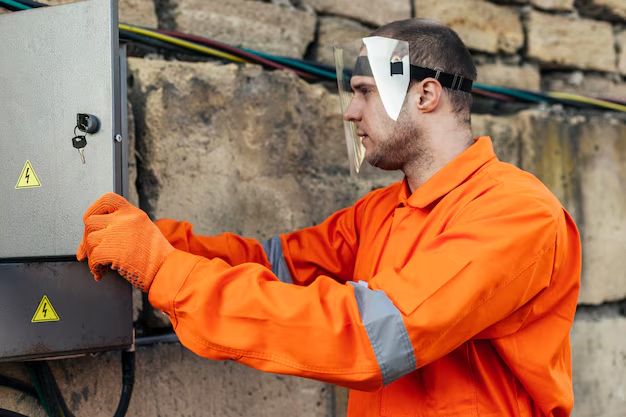How To Change the Thermostat in Your Refrigerator: A Practical Guide
Refrigerators are an indispensable part of our daily lives, keeping our food fresh and our beverages cold. Yet, like any appliance, they can sometimes run into hiccups, one of which can be thermostat issues. Whether your refrigerator is too warm, freezing everything in sight, or it's just time to swap out an older component, changing the thermostat can solve a host of problems. Let’s dive into how you can confidently replace your refrigerator's thermostat with minimal fuss.
📌 Understanding the Thermostat’s Role
What Does a Refrigerator Thermostat Do?
The thermostat in a refrigerator is a crucial component that regulates the temperature. It ensures that your fridge maintains a steady temperature, keeping your groceries at optimal freshness. It functions as the brain of the cooling system, sensing the temp inside the fridge and kicking the compressor on and off to maintain your desired coolness.
Signs Your Thermostat Might Be Faulty
A malfunctioning thermostat can cause your fridge to be too warm or too cold. Here are some telltale signs:
- Inconsistent Temperature: The fridge's temperature wavers despite the settings.
- Food Not Preserved: If food spoils or freezes unexpectedly.
- Increased Energy Bills: An ineffective thermostat may cause the fridge to run excessively.
- Strange Noises: Unusual sounds, like continual clicking, may indicate thermostat failure.
🛠️ Tools and Preparation: What You’ll Need
Before embarking on the thermostat replacement journey, arm yourself with the right tools and knowledge.
Essential Tools
- Screwdriver Set: A varied set of screwdrivers will help with different components.
- Multimeter: To test the old thermostat for functionality.
- Replacement Thermostat: Ensure compatibility with your fridge model.
- Flashlight: Handy for peering into dark crevices.
Preparing for the Task
- Safety Precaution: Unplug your refrigerator from the power source to prevent electrical hazards.
- Clear the Area: Remove food items and shelves if necessary to access the thermostat easily.
- Manual Reference: Consult your refrigerator's manual for specific instructions related to your model.
👨🔧 Step-by-Step Thermostat Replacement Guide
Step 1: Locate the Thermostat
Refrigerator thermostats are usually found inside, near the top or back of the fridge. In some models, it may be concealed behind the temperature control panel.
Step 2: Remove the Old Thermostat
- Access the Controls: Use the screwdriver to remove any panels covering the thermostat.
- Test the Old Thermostat: Connect a multimeter to check its resistance. A functioning thermostat should show continuity.
- Disconnect the Wires: Carefully disconnect the wires attached to the old thermostat. Take a picture or note their arrangement for reference.
- Detach the Unit: Unscrew and remove the old thermostat.
Step 3: Install the New Thermostat
- Position the New Unit: Place the new thermostat in the housing where the old one was located.
- Reconnect Wires: Attach the wires to the appropriate terminals on the new thermostat.
- Secure the Unit: Screw it into place firmly.
- Replace Panels: Reattach any panels or covers you removed earlier.
Step 4: Final Checks
- Restore Power: Plug the fridge back into the power supply.
- Test the Settings: Set the thermostat to the desired temperature and monitor its performance over the next few hours.
- Adjust if Necessary: Make minor adjustments to the settings to achieve optimal performance.
🔄 Related Topics: Enhancing Refrigerator Efficiency
Changing the thermostat is a great step toward maintaining your refrigerator, but there are additional measures you can take to ensure your appliance is running at peak efficiency.
Regular Maintenance Tips
- Clean Coils: Dirty coils can obstruct airflow and reduce efficiency. Regularly clean them using a brush or vacuum cleaner.
- Check Seals: Ensure door seals are tight and not letting out cool air.
- Defrost Regularly: If your fridge is manual defrost, clear out built-up frost to aid the cooling process.
When to Call a Professional
Not every issue is DIY-friendly. If problems persist after replacing the thermostat, or if you notice more complex issues such as refrigerant leaks, it’s best to consult a professional technician.
📒 Quick Takeaways: Simplifying Your Thermostat Change
Here’s a handy, quick-reference list to make the process a breeze:
- 🛠️ Gather Tools: Screwdrivers, multimeter, flashlight, and replacement part.
- 🔌 Safety First: Always unplug your fridge before work begins.
- 📍 Locate Efficiently: Know the position and removal tactics for your thermostat.
- ✅ Install Correctly: Double-check wire attachments and secure placement.
- 🧑🔧 Test and Follow-Up: Monitor effectiveness post-installation.
With this guide, you’re equipped not only to tackle a faulty thermostat but also to maintain a happy, healthy refrigeration environment. Taking proactive steps like these can extend the life of your appliance and keep your food preservation hassle-free.
